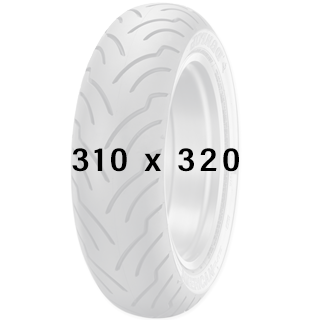Tire Load Rating vs Tire Load Range
The Tire and Rim Association (TRA) is an organization that standardizes tire specifications across the USA. Each year, TRA publishes tire guidelines that provide information on inflation standards and tire load index charts for all tires on and off-road.
The organization works with tire, wheel, rim, and allied parts manufacturers to provide a standard reference for tire load and inflation. Also, this standardization gives clear information on the safe working limits of tires and corresponding sized rims.
This information is vital for all motorcycle riders whether choosing new tires for the daily commute to as extreme as a two-up road trip.
You can understand how the TRA’s tire specifications relate in practice by understanding what they mean.
What is a Tire Load Index?

While they are durable and pliable, tires have a maximum load they can safely withstand. The max weight is the tire’s load rating or load index when given proper air pressures. This information is valuable for riders who often carry heavy loads.
The sidewall of a motorcycle tire contains important specification information. To find the tire load index, you should look for an alphanumeric code like the example below:
180/65B16 81H
In this example, the tire load rating is “81.” You can find these ratings on a tire index chart, which displays load index values and the corresponding carrying capacity for tires.
On a tire index chart, the value “81” corresponds to a load capacity of 1,019 pounds or 462 kilograms.
This metric is per tire. So to figure out the total load your motorcycle can carry, you must add both load ratings together. So still using the previous example, if the two tires on the vehicle were the same, you would multiply the load rating by two, like this:
Single tire load rating = 1019lb (462kg)
Multiplied x 2 for the number of tires on the motorcycle = 2038 lb (924kg)
The load rating gives a specific maximum capacity for how much each tire will carry. Yet, you also need to take into consideration your vehicle’s capabilities.
Listed in the owner’s handbook, every motorcycle manufacturer supplies a maximum weight capacity. This figure considers the bike’s curb weight, rider, passenger, accessories, and luggage.
Keep in mind motorcycles don’t have a perfect 50/50 weight balance. Most motorcycles weigh more on the rear than the front. An accelerating motorcycle also shifts more weight to the rear.
The load rating tells you about the maximum weight that the air in the tires can hold. Meanwhile, the load range tells you more about the tires themselves, by providing insight into the strength and construction of each tire.
Dunlop Load Limit Calculator
Check out Dunlop’s Load Limit Calculator to ensure you aren’t overloading your motorcycle before you get on the bike.

According to Dunlop’s Care & Maintenance guidelines for Load-Carrying Capabilities, tires offering different load-carrying capacities are available. Consider carefully the load of the motorcycle, whether it will carry passengers and the weight of any optional equipment. Remember, the load-carrying capability of the tires is also reduced by underinflation. It is possible to overload a tire even though it is the size specified by the motorcycle manufacturer. Maximum loads and the corresponding pressures are indicated on the sidewall of all Dunlop street tires.
Before riding, the motorcyclist must determine the total weight of luggage, equipment, and rider(s) to be added to the motorcycle. We instruct your customers that the total weight of luggage, equipment, and rider(s) must never exceed the vehicle load capacity found in the motorcycle owner’s manual. Read the full excerpt on the Care & Maintenance page onsite.
What is a Tire Load Index?
In the past, tire manufacturers used a metric called a ply rating. This measurement described the overall tire strength as a product of its composition.
A series of rubber components, synthetic fabrics, and cords are layered on a tire carcass to form the overall product. The cords, also known as plies, are extremely strong.
The ply rating was once a simple measurement of how many plies the tire contained. The more plies, the higher the rating and the stronger the tire.
However, modern ply technology means manufacturers can build tires with fewer plies. The wide variation in ply composition makes it difficult to standardize this measurement, so the industry now uses what is known as load range.
There are three main types of load range for motorcycles, and they are:
- A
- B
- C
Each letter indicates the approximate ply strength for that tire regarding standard ply count. So, for instance, a tire with a “B” load range means that the tire’s strength is equal to a 4-ply construction.
This information doesn’t mean that the tire has four plies; just that it has the same strength as a 4-ply tire.
Reading the sidewall for the tire load index and load range will help you make the right decision when choosing new tires.
In understanding your motorcycle tire’s capabilities, you can enjoy your bike to the fullest. Better still, you will feel a lot safer knowing that you aren’t compromising its ability to haul your load.
Are you looking for professional advice on all aspects of your motorcycle tire requirements? Then locate your nearest Dunlop Motorcycle Tire Dealer here.









